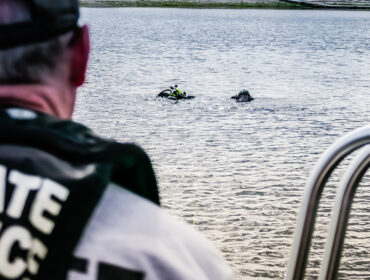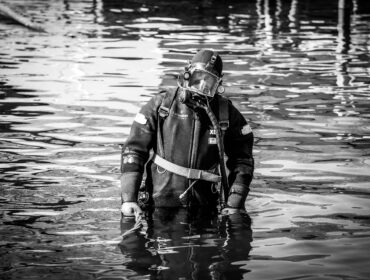“SUP yoga” is the sum of both stand-up paddleboarding and yoga. It’s serene and absolutely scenic. However, it could be hilariously wobbly to try the first time, and that’s alright!
You could be an experienced yogi or someone who wants to find balance (literally) on water. No matter what you are, SUP yoga can offer a refreshing and fun way to mix your love for nature with mindfulness and movement.
What is SUP yoga?
So, it means “stand-up paddleboard yoga.” It’s commonly done in calm water such as lakes, bays, or slow rivers.
It combines yoga with the task of consistently balancing on the paddleboard. It’s a full-body workout that helps enhance people’s mental clarity. Plus, isn’t there just something magical about performing a downward-facing dog with fish swimming below and the sun shining above?
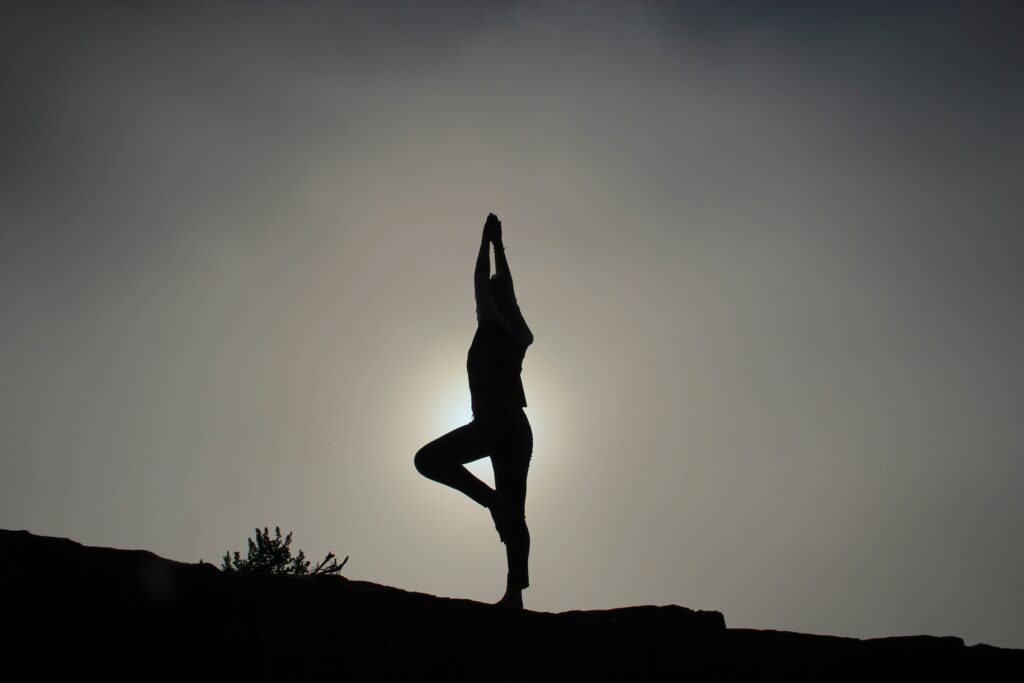
Is SUP yoga for beginners?
Absolutely! If you’re new, don’t be intimidated. Many SUP yoga classes actually cater to beginners. Instructors typically slow things down and guide you through easier flows.
But here’s the thing: falling is part of the fun. In fact, one of the best parts about SUP yoga is learning to laugh at yourself. There’s no need for perfection out on the water — just go with the flow (pun definitely intended). Plus, if you tip over, you’ll land in water instead of on a hard yoga studio floor.
Where can I do SUP yoga?
You don’t need to live by the beach to give it a try! Here’s a detailed look at your options for finding SUP yoga classes or locations to practice on your own:
Local lakes or reservoirs
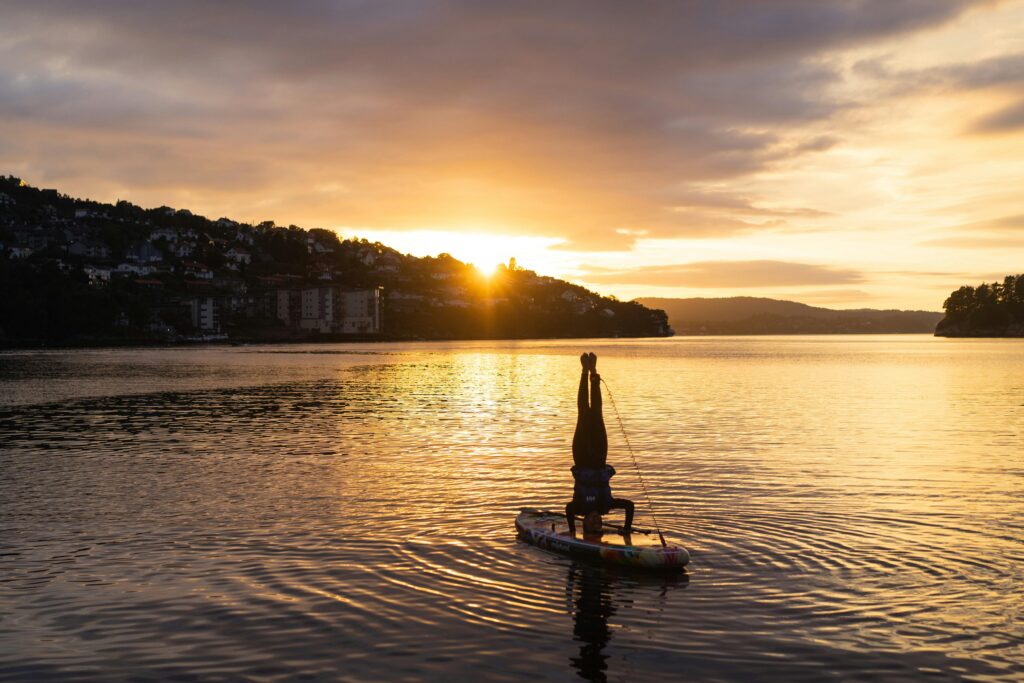
These bodies of water are often ideal for beginners because they tend to have calm, flat surfaces, making it easier to stay balanced on your paddleboard.
Local outdoor fitness centers or studios
Local outdoor fitness centers, community centers, or yoga studios may also offer seasonal SUP yoga classes at nearby lakes, especially in the warmer months. Some of these classes even provide the boards and all the necessary gear, so all you have to do is show up. Make sure to ask and research in advance, though!
Coastal areas
There’s a bit of a challenge here — ocean water is constantly moving. Beginners will want to avoid areas with strong currents or large waves.
Look for sheltered spots with minimal boat traffic and gentle waters, like a protected cove or a shallow bay. In these areas, you’ll still enjoy the soothing sounds of the ocean without battling the tides.
Do you have to prepare for SUP yoga?
Yes! A little preparation can make all the difference. Here’s a preparation checklist:
You need to know how to swim.
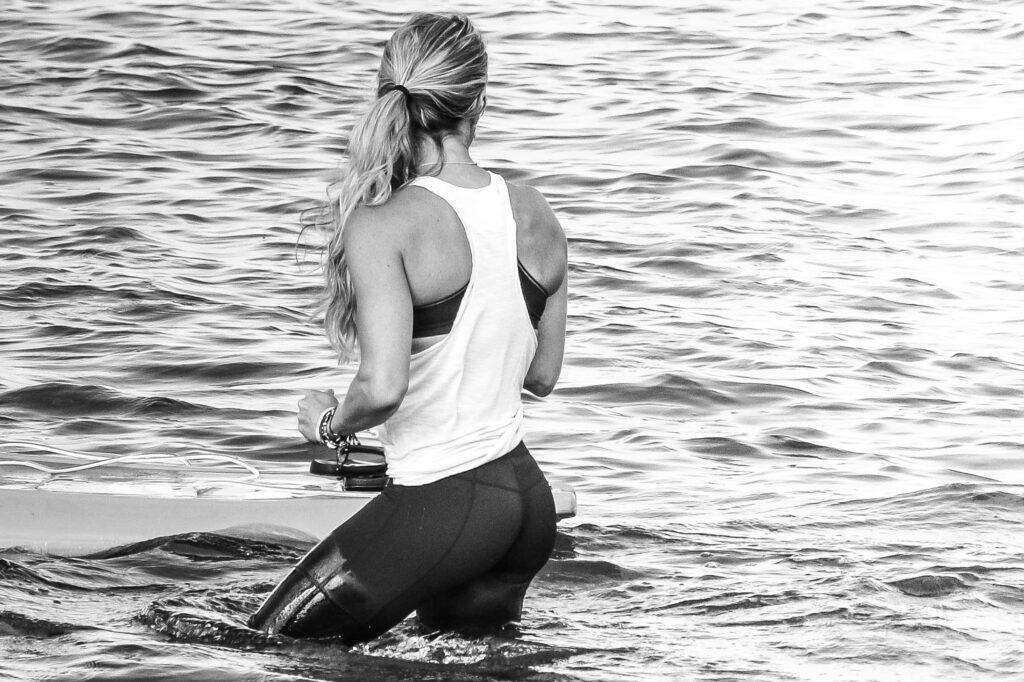
It’s so you focus more on your yoga practice rather than worrying about the water beneath you. A basic swimming ability gives you peace of mind and lets you embrace the experience fully. And don’t worry, SUP yoga classes are typically held in calm, shallow water, so you’re not drifting out to sea if you fall in.
Work on your balance and core strength.
Practicing balance on dry land helps you prepare for that instability. You can try using a Bosu ball (one of those half-exercise balls) or a balance board to mimic the feel of standing or sitting on an unsteady surface. You can even practice standing yoga poses in the sand or on uneven terrain, which will also help improve your stability.
By getting your core muscles used to adjusting for wobbles, you’ll feel more confident when you’re actually on the paddleboard. Plus, it’ll make your first class feel less like a circus act and more like a zen experience.
Have quick drying, fitted clothing.
Get yourself some moisture-resistant athletic wear or a swimsuit, if you haven’t yet. If you’re prone to sunburn, a rash guard can offer great sun protection.
SUP yoga is typically done barefoot. However, if you’re on rough or rocky waters, water shoes might be a good option.
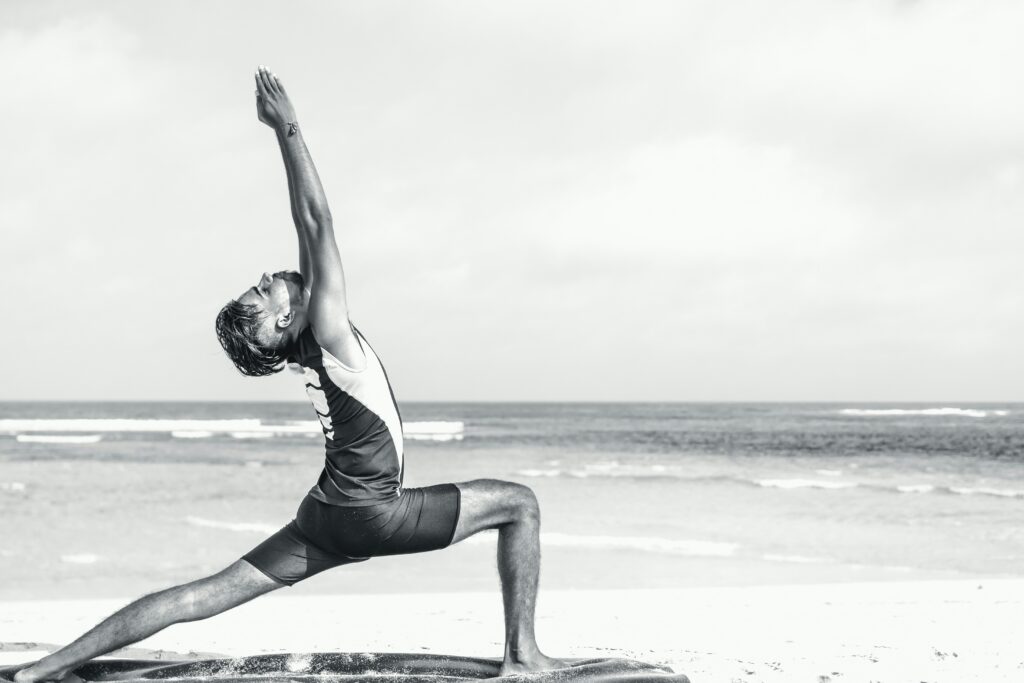
Hydrate and protect yourself from the sun.
Make sure to put on sunscreen at least 15 minutes before getting on the board. And pay extra attention to often-overlooked areas such as: your ears, back of your neck, and feet.
Just as important, stay hydrated! You’ll be under the sun, possibly sweating as you work on balancing, so bring a reusable water bottle and drink before and after the session.
Check the weather and water conditions.
If it looks like there’ll be strong wind or rough water, it might be best to reschedule your class or practice on a calmer day. Even a small breeze can turn a simple pose into a challenge.
Pro Tip: If the weather seems unpredictable but you’re already on the water, stick with poses that keep your center of gravity low—think seated postures or gentle stretching.
Some Paddleboards We Sell for SUP Yoga
Here’s a breakdown of a few incredible SUPs we offer, each with its own unique features that cater to different adventure styles:
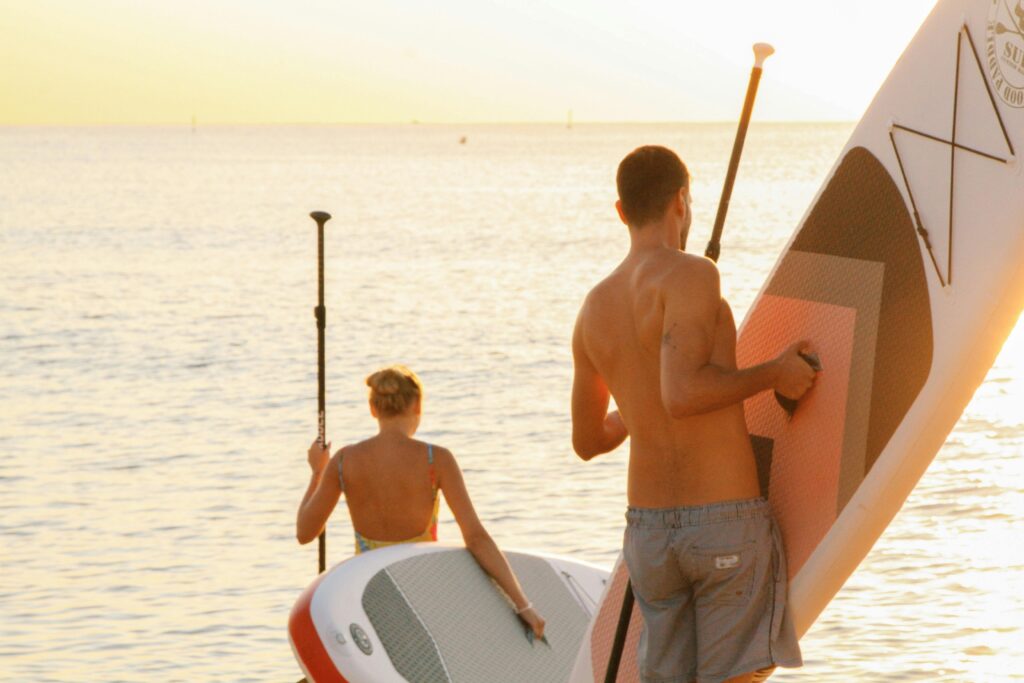
Solstice Maori Multi-Person SUP Kit
Crafted from 1000 Denier, 3-ply reinforced PVC material, this board is built to last and withstand whatever your adventures throw at it. Measuring an impressive 16′ x 50″ x 6″, it comfortably accommodates 2-6 paddlers with an astounding weight capacity of 1,000 lbs.
With 12 grab handles, moving and transporting this inflatable SUP is a breeze. Plus, the 6″ core and round-nosed construction make for a smooth and stable ride.
NRS Clipper SUP Board 11′
Thanks to Integrated Shaping Technology (IST), the Clipper features a unique shape with multiple air chambers for enhanced touring efficiency. This innovative design ensures that the board is 20% stiffer and 15% lighter than previous models. It’s recommended to inflate it to 20 PSI for unbeatable rigidity and a solid ride.
The V-Hull design optimizes speed and tracking. On the other hand, the DropDeck feature lowers your center of gravity for improved stability. With an EVA foam deck pad that offers excellent grip, you can paddle confidently even in wet conditions.
FAQs: SUP Yoga
Not at all! SUP yoga is perfect for beginners, both in yoga and paddleboarding.
It’s not as hard as you might think! While you’ll definitely wobble, paddleboards are very stable (it’s what they’re made for!).
Yes! Many classes allow you to bring your own board, but make sure it’s wide and stable enough for yoga.
Totally. SUP yoga classes are held in calm waters, and you’ll be wearing a personal flotation device (PFD) or leash for safety.
It’s best to know how to swim before doing SUP yoga for your own safety. Some locations might offer shallow-water classes, but it’s always recommended to be confident in your swimming skills.
Love and Learn More About SUP Yoga
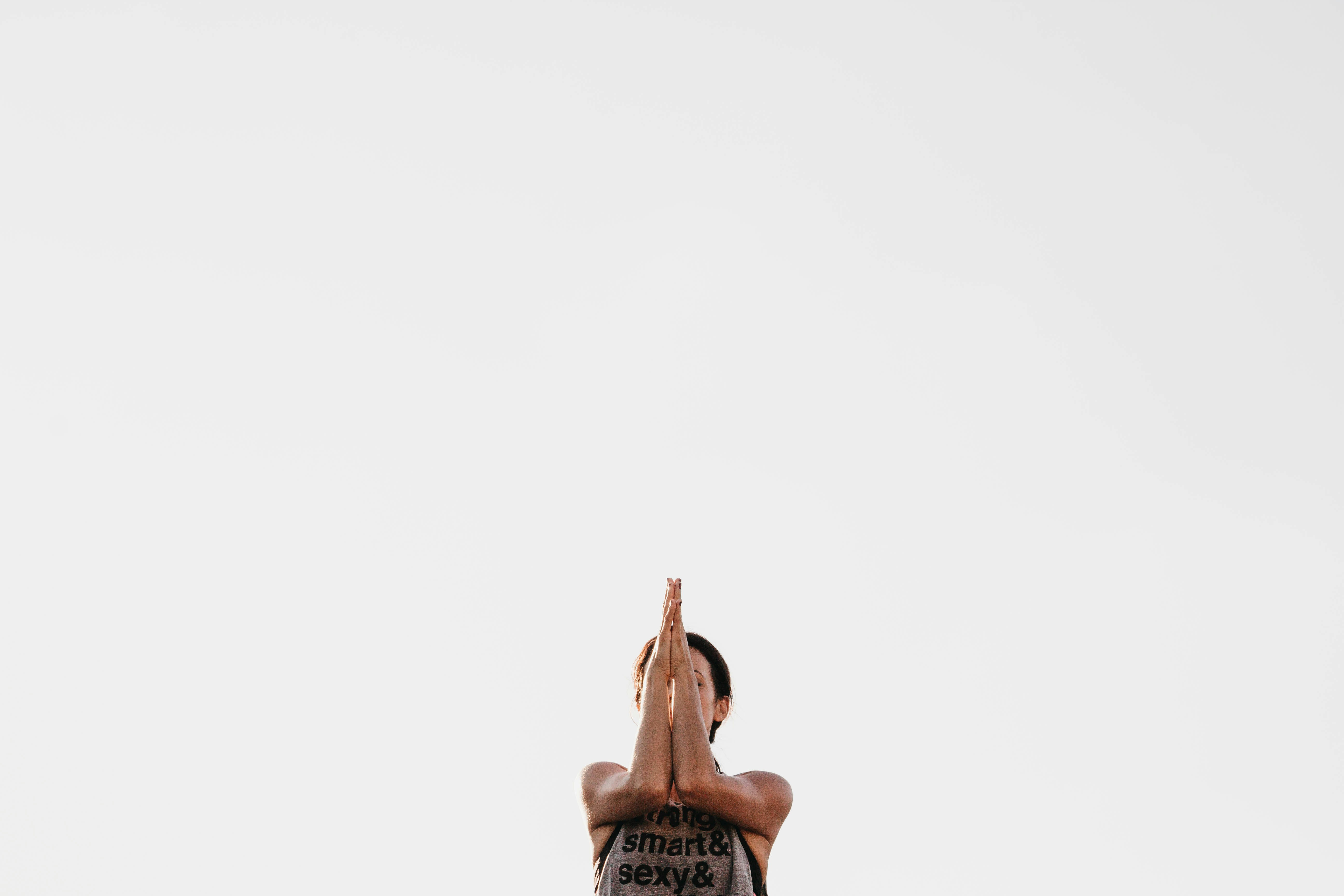
SUP Yoga is an adventure that, one I learned about it, I realized it’s like no other. It makes us embrace calmer waters, connect with our bodies better, and learn to balance both on and off the water.
Ready to paddle and pose your way into tranquility? Go on, hop on that paddleboard — you might just float away feeling a little more zen.
Peek our latest articles:



